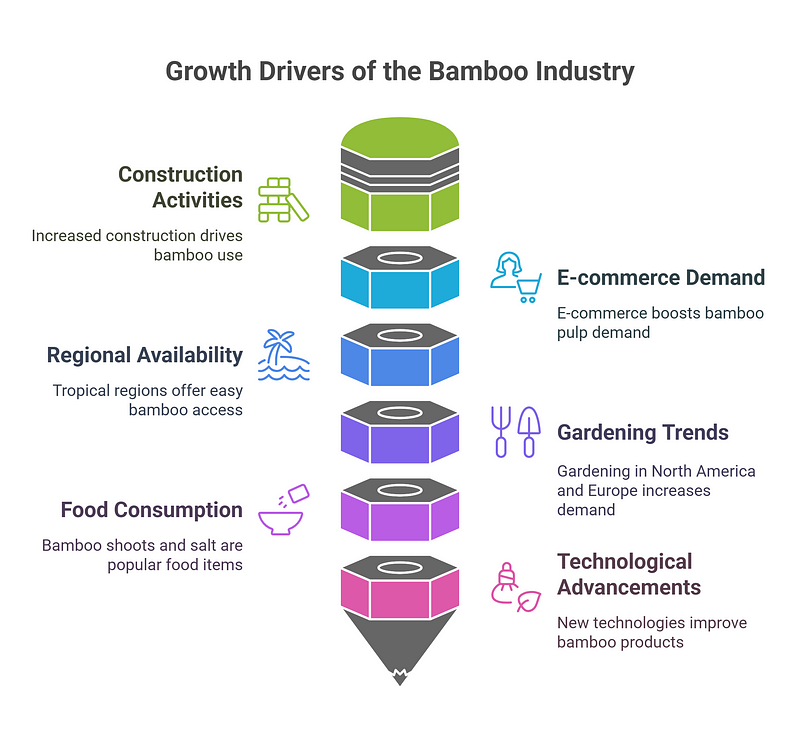Bamboos Nature’s Fastest-Growing Wonder
Bamboos Nature’s Fastest-Growing Wonder
Allied Market Research published a report, titled, “Bamboos Market by Species (Moso bamboo, Bambusa vulgaris, Others), by Application (Gardening, Furniture, Construction, Industrial, Food): Global Opportunity Analysis and Industry Forecast, 2021–2031” According to the report published by Allied Market Research, the global bamboos market size stood at $65.8 billion in 2021, and is projected to reach the market size of $99.8 billion by 2031, growing at a CAGR of 4.1% from 2022 to 2031.
Drivers, restraints, and opportunities-
Surge in construction and industrial activities in developed nations, easy availability of bamboos across all the tropical regions and upsurge in gardening activities contribute to the growth of the bamboos industry. However, the ready availability of products made from plastic and metal is restraining the growth of the bamboos market. On the other hand, increase in demand for paper and pulp products provide lucrative opportunities for growth of the bamboos market in the next few years.
Covid-19 Scenario
- The COVID-19 outbreak impacted the bamboos market adversely. Manufacturers in the market had to stop their business in countries, such as China, the U.S., and India, thereby affecting the sales of bamboo-based products. Shortage of manpower and raw materials constricted the supply of bamboo and bamboo-based products.
- Nevertheless, post two years of COVID-19 outbreak and introduction of vaccinations, the severity of the loss significantly reduced, which is a positive indicator for the bamboos market growth.

The others segment to retain the lion’s share
Based on species, the others segment held more than half of the market share in 2021 and is expected to continue this trend through 2031. The same segment would also witness the fastest CAGR of 4.4% during the forecast period. The stupendous growth is owed to the availability of a wide range of bamboo species and their applications in various industries.
The furniture segment to lead the trail through the forecast period
Based on application, the industrial segment held the largest share in 2021, garnering more than two-fifths of the global market and is expected to continue maintaining its strong hold during the forecast period. This is due to the extensive use of bamboos in paper and pulp industry. However, the furniture segment is likely to witness the fastest CAGR growth of 4.9% during the forecast period. This is attributed to increase in demand for bamboo furniture and awareness regarding excessive use of plastics.
Asia-Pacific would dominate the market through 2031
Based on region, Asia-Pacific region bagged the major market share of more than two-thirds in 2021 and would continue to manifest this dominancy through the forecast period. This is attributed to the large number of bamboo plantations in countries such as China, India and Japan. However, the LAMEA region is expected to grow at the fastest CAGR of 5.3% through 2031, the reason being rise in use of bamboo for various construction and industrial applications.
Visit Us: